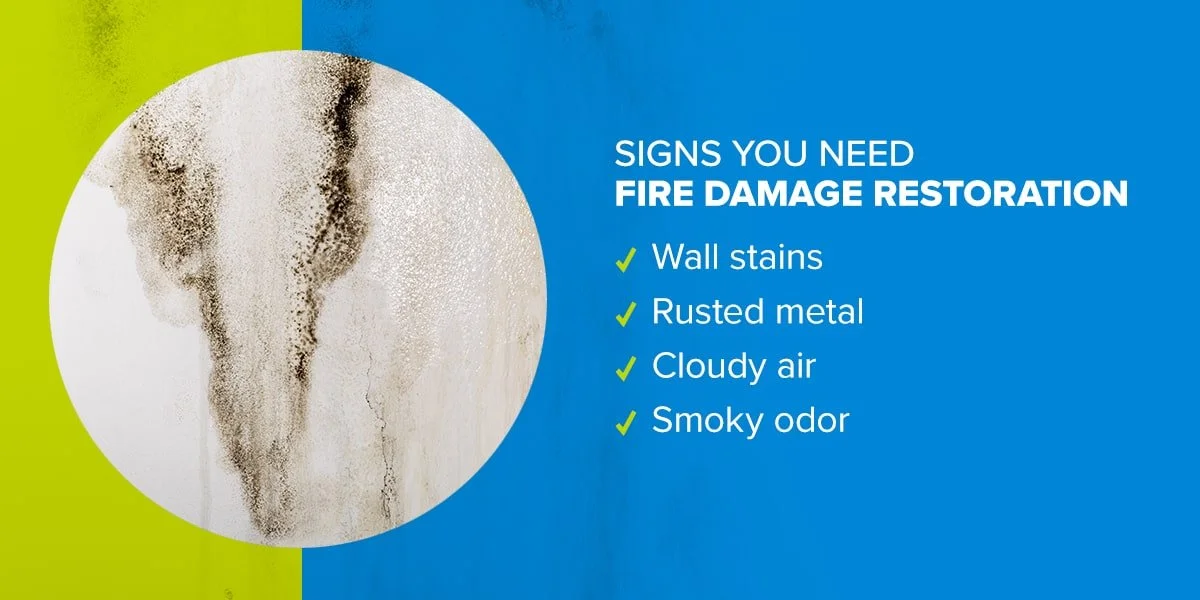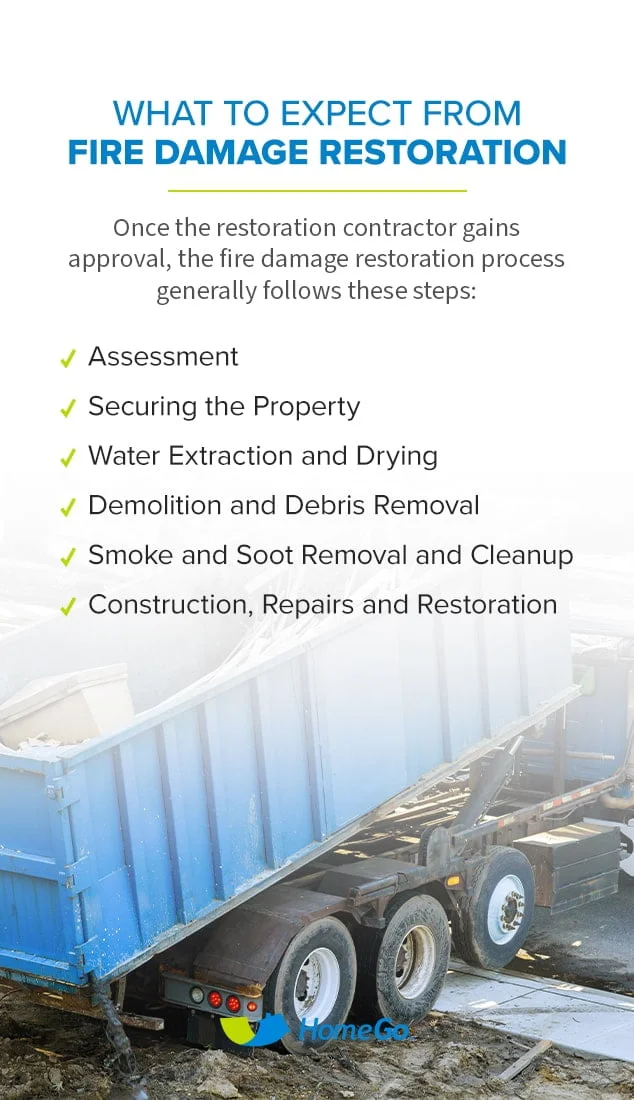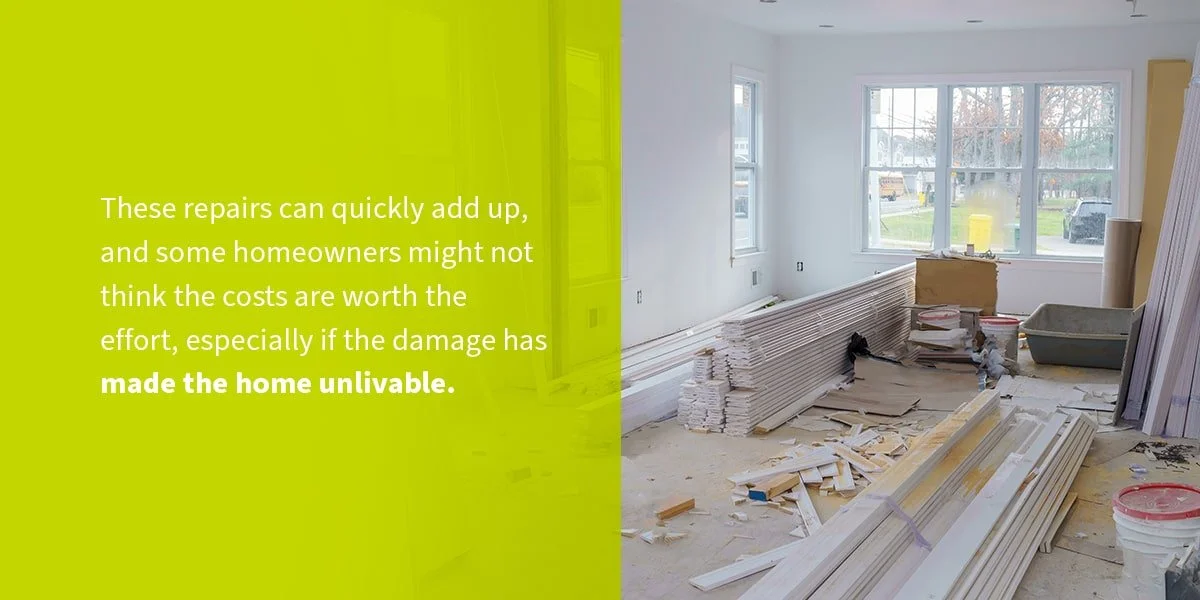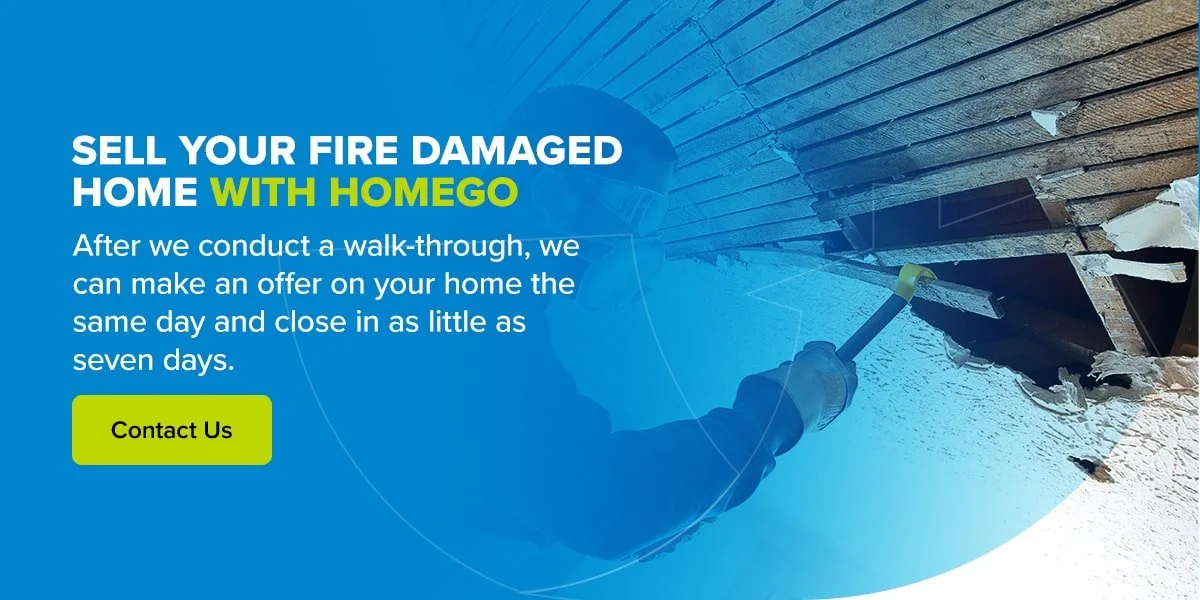If you ever had a fire in your home, even a small one, you likely have some residual damage. Fire damage can impact your home’s value and create a dangerous living situation if you don’t take the proper steps to restore your property. Depending on the extent of the damage, fire damage restoration can be a long and invasive process.
Some homeowners with extensive damage might not think restoration is worth the effort, but they don’t know what other options they have. The good news is homeowners with fire damage have multiple choices, including selling their home as-is to a professional home buyer.
Learn more about fire damage restoration below and your options as a homeowner.
What Is Fire Damage Restoration?
The damage doesn’t stop after you put out a fire. A fire can destroy furniture, personal items and your home’s structural integrity. Fires also impact the air quality inside, which can cause an array of problems if you continue to live in your home after putting out the fire.
Fire damage restoration returns homes to their previous state before fire and smoke damage. A fire may also cause water damage if the fire department used water to put out the blaze or the fire caused pipes to burst or melt.
Fire restoration can include demolition and reconstruction, odor and soot removal, deep cleaning and boarding up the property. Professionals will also remove standing water and dry damp areas of the property to prevent further damage.
It’s essential to start the fire damage restoration process as soon as possible as soot and smoke damage can speed up the corrosion process of structural components.

Signs You Need Fire Damage Restoration
You might not know whether or not you need fire damage restoration. Even a small fire that you could handle with a fire extinguisher might still require professional fire damage restoration. Signs that might indicate that your home needs fire restoration include:
- Wall stains: You might notice black or gray stains on the wall in the days following the fire, which might be smoke spots. These spots need to be taken care of as soon as possible to eliminate smoke particles from your home’s walls. In some cases, professional cleaning is all it takes to handle these stains, but other situations require a professional replacement of the material.
- Rusted metal: After putting the fire out, the surrounding metal hardware could start to rust. Rusting metal can make it challenging for the hardware to perform as expected, impacting your ability to maintain a functional home. A professional can replace the rusted metal hardware and clean the area to prevent further rusting.
- Cloudy air: Chemicals released by the fire might stay in the air. One way to tell is if the air in your home remains cloudy after opening windows and ventilating the space. It can be dangerous to inhale these chemicals over time, so it’s essential to have a professional clean the area and restore a safe breathing environment.
- Smoky odor: If it’s been days since the fire and the smell of smoke doesn’t seem to go away, it’s likely because various materials absorbed the smoke in your home. A professional can help you remove the smell from your home and restore or replace materials that have absorbed smoke.

What to Expect From Fire Damage Restoration
It’s essential to hire a professional if you decide to move forward with fire damage restoration. A professional knows how to restore the property so it’s safe to live in again. The time it takes for fire damage restoration will vary based on the extent of the damage. A small fire may only require a few days of repair, while a larger fire can cause restoration efforts to last a couple of months.
Utilizing advanced HVAC dispatch software can expedite the fire restoration process by efficiently scheduling and dispatching HVAC professionals to manage any HVAC systems damaged by fire. This ensures rapid response times and enhances coordination among teams, significantly reducing the downtime of essential services during the crucial rebuilding stage.
But how do you repair fire damage?
Before you can begin the fire damage restoration process, the contractor must seek approval from a licensed fire authority. Otherwise, they risk injury if they enter an unsafe environment. Once the restoration contractor gains approval, the fire damage restoration process generally follows these steps:
1. Assessment
The first step the contractor will take will be to conduct a thorough assessment of the property and the extent of the damage. They’ll check to see how far the blaze spread and where fire or smoke may have damaged the structure. They’ll also determine how extensive debris removal and cleanup might be.
The contractor will assess the items inside your home, such as hardware and furniture, to determine what needs removal and what they can restore.
Once the assessment is complete, the contractor can give you an idea about how much the restoration will cost and how long it will take.
2. Securing the Property
With the assessment complete, work can begin. Securing the property is an essential step to ensure the safety of workers and reduce further damage to your property. Securing your property will include:
- Installing temporary fencing.
- Temporarily boarding up the home and covering the roof.
- Removing debris around the fence and property perimeter.
- Bracing the structure.
Securing the property will also keep the weather from causing additional damage to your home. Other parts of the property may be sealed off if they weren’t damaged in the fire to keep cross-contamination from occurring.
3. Water Extraction and Drying
When a fire occurs, it can damage water pipes and cause them to burst or melt, allowing water to leak or build up and damage the home. If the fire was doused with water by firefighters, the excess water could cause additional damage.
The next step of the fire damage restoration process is to prevent further damage and mold growth. The crew will remove any standing water and use roof tarps to keep water from invading the home. The extraction crew will use commercial equipment to dry your home’s structure.
4. Demolition and Debris Removal
Once the structure is dry, the contractors can move on to demolition and debris removal. Contractors may need to remove damaged walls and flooring, but the home structure will be saved and repaired if possible. The crew will only remove structural items or parts of the home if they’re irreparably damaged.
The contractor will also remove the debris from your home during this step. All personal property from the damaged area will be removed, including furniture or appliances. If these items can be restored, the process will take place off the property, and they’ll be replaced once fire damage restoration is complete.
5. Smoke and Soot Removal and Cleanup
This step is one of the most intensive parts of the restoration process since cleaning up fire damage and removing smoke or soot from the interior can take time and plenty of manual labor. Since smoke and soot can linger in many home materials, it’s essential to deep clean everything in the affected area.
During cleanup, a deodorizing agent is used to remove the smell of smoke from furniture, walls and other home areas. If the contractor repaired any water damage, they might apply antimicrobial agents or sanitizers as an additional preventive measure against mold growth.
Items removed from the home, such as furniture, may also be treated and restored. Crew members will also clean the air ducts to remove soot, smoke build-up or debris. Walls should also be cleaned and sanded to remove build-up before painting or laying down new wallpaper.
6. Construction, Repairs and Restoration
The last step of fire damage restoration is to rebuild demolished areas due to fire damage or make repairs where possible. Construction, repairs and restoration can include:
- Replacing or rebuilding the roof.
- Painting walls or replacing drywall.
- Replacing flooring.
- Replacing fixtures.
- Repairing wiring and plumbing.
The goal is to restore your home to its condition before the fire. It can take anywhere between a few days to multiple months to complete restoration, depending on the extent of the fire damage.
Is It Safe to Stay in My House After a Fire?
Once an inspector determines that the air quality in the home is safe to live in, you can choose to move back to your home. However, fire damage can pose certain risks, even if you don’t initially notice the damage. Fire damage can compromise the structural integrity of the home, which can put you and your family in harm’s way.
Look for these signs to determine if the structure of your home has taken damage:
- Charred wood or building materials
- Cracks in the structure or foundation, including bricks, masonry and concrete
- Cracked or warped metal
If you move back into your home without having the air quality checked, you could be breathing in dangerous chemicals that can harm your health. The chemicals and toxins need to be removed from all spaces, including small closets and enclosed spaces. If these hazardous materials aren’t removed, you and your family might experience eye irritation, rashes or breathing problems.
It’s possible to stay in your home after a fire, but it does come with some risks, especially for people with compromised immune or respiratory systems. If you plan on moving back into your home after a fire, it’s essential to have the damage restored to keep you and your family safe.

How Much Does It Cost to Recover From a Fire?
On average, homeowners pay about $17,000 to repair their homes from fire damage. However, prices will range based on the size of the fire and the extent of the damage.
For example, if you experience a small fire and are able to put it out quickly, you may only face minor damage and repair costs of roughly $800-$2,800. If most of your home was damaged in a large fire and the repairs are extensive, you may have paid a high-end cost of $150,000.
The cost of fire damage restoration can get expensive since repairs can include:
- Water damage and cleanup.
- Soot removal and cleanup.
- Smoke damage restoration.
- Ozone smoke removal.
- Deodorizing furniture and materials.
These repairs can quickly add up, and some homeowners might not think the costs are worth the effort, especially if the damage has made the home unlivable. These homeowners have different options than investing in fire damage restoration, including selling their house as-is.
Options for Homeowners Experiencing Fire Damage
Fires can cause extensive damage to your home and create an unsafe living environment. As a homeowner, you might wonder what options you have, especially if the damage to your home is substantial. In general, homeowners have two options after a fire.
Option One: Fire Damage Restoration
If you never planned on selling your home and would like to continue living there, fire damage restoration is the best option. You can repair all damage and replace compromised fixtures, furniture, hardware or structural parts. Restoration can include simple repairs or a total overhaul, depending on the size of the fire and the extent of the damage.
If you have homeowner’s insurance, your provider might cover some fire damage restoration costs. However, homeowners insurance doesn’t cover all types of fires. For example, if you started a fire intentionally and it got out of control and damaged your home, homeowners insurance likely won’t cover the cost of repairs and restoration.
If insurance doesn’t cover the costs, you’ll have to pay for restoration costs out of pocket. Fire damage restoration can be a long and tedious process, and many homeowners would rather look into other options than spend money making the repairs.
Option Two: Selling Your Home As-Is
If you were considering selling your home but were stopped by a fire, you might be surprised to learn that you can still sell your home, even with fire damage. You might want to try to sell on the market if the fire was small, but homeowners have to disclose information about fires on the property, making it challenging to sell.
The good news is a professional home buyer will purchase your home, regardless of condition. When they conduct a walk-through of your home, they’ll assess the damage and consider the repair costs before making their offer.
Rather than paying for the repairs and restoration yourself, the home buying company will handle everything once you close the deal. You can close quickly with a home buying company so you can use the cash to finance your move.
Sell Your Fire Damaged Home With HomeGo
Rather than go through the expensive and extensive fire damage restoration process, consider selling your home as-is with HomeGo. Even if parts of your home took considerable damage in the blaze, we’ll still make an offer on your home and handle the restoration ourselves once we close the deal.
After we conduct a walk-through, we can make an offer on your home the same day and close in as little as seven days. Since we can finalize the deal quickly, you’ll be able to use the cash to find a new home and start over after a fire without worrying about selling your home on the market or paying for restoration. You can even leave behind any damaged furniture or personal items you don’t want to take with you, and we’ll handle all the heavy lifting.
Schedule an appointment today if you’re ready to get started!





